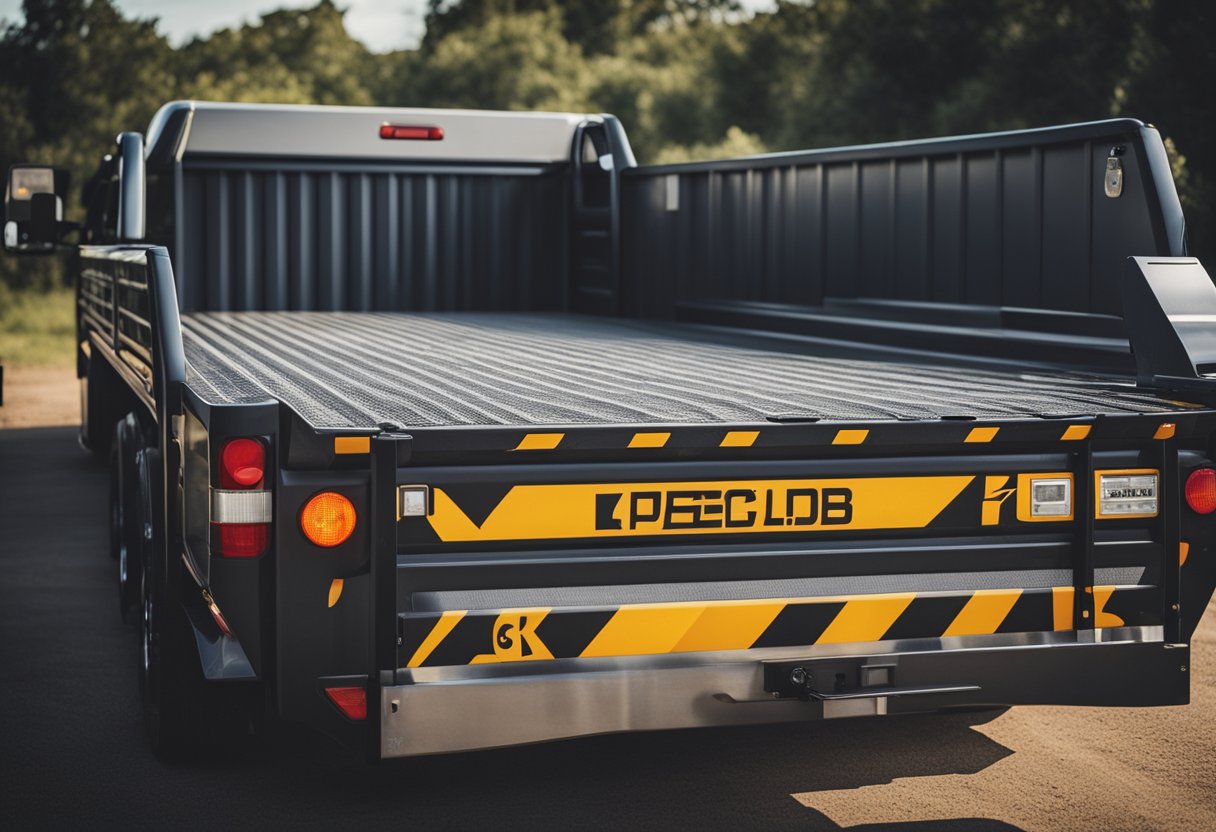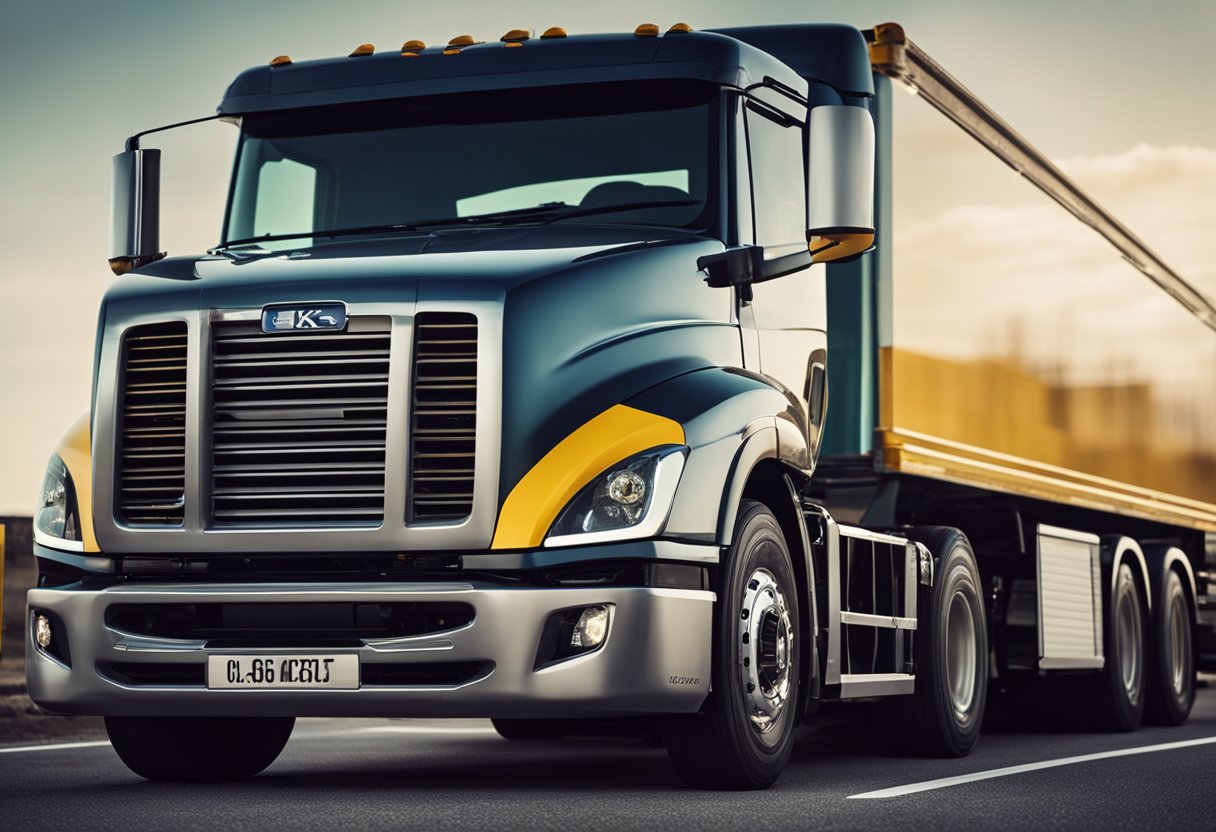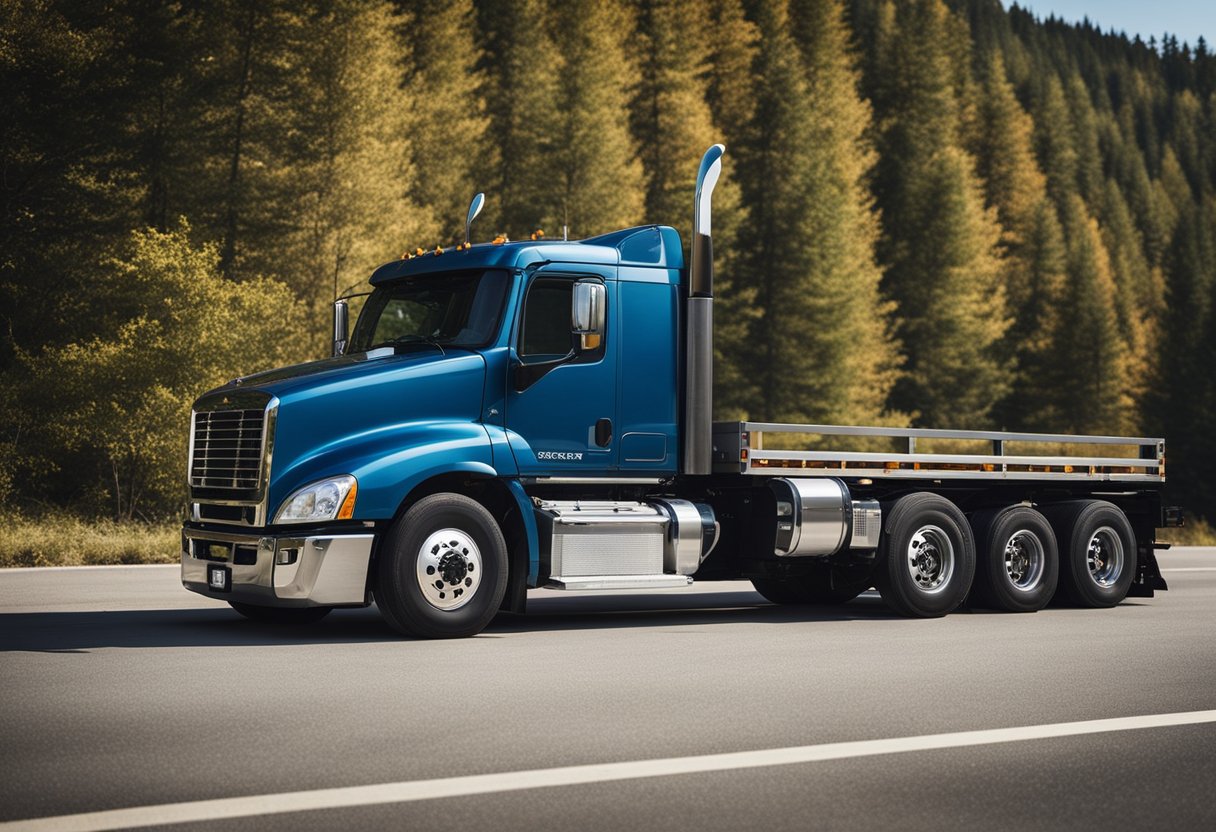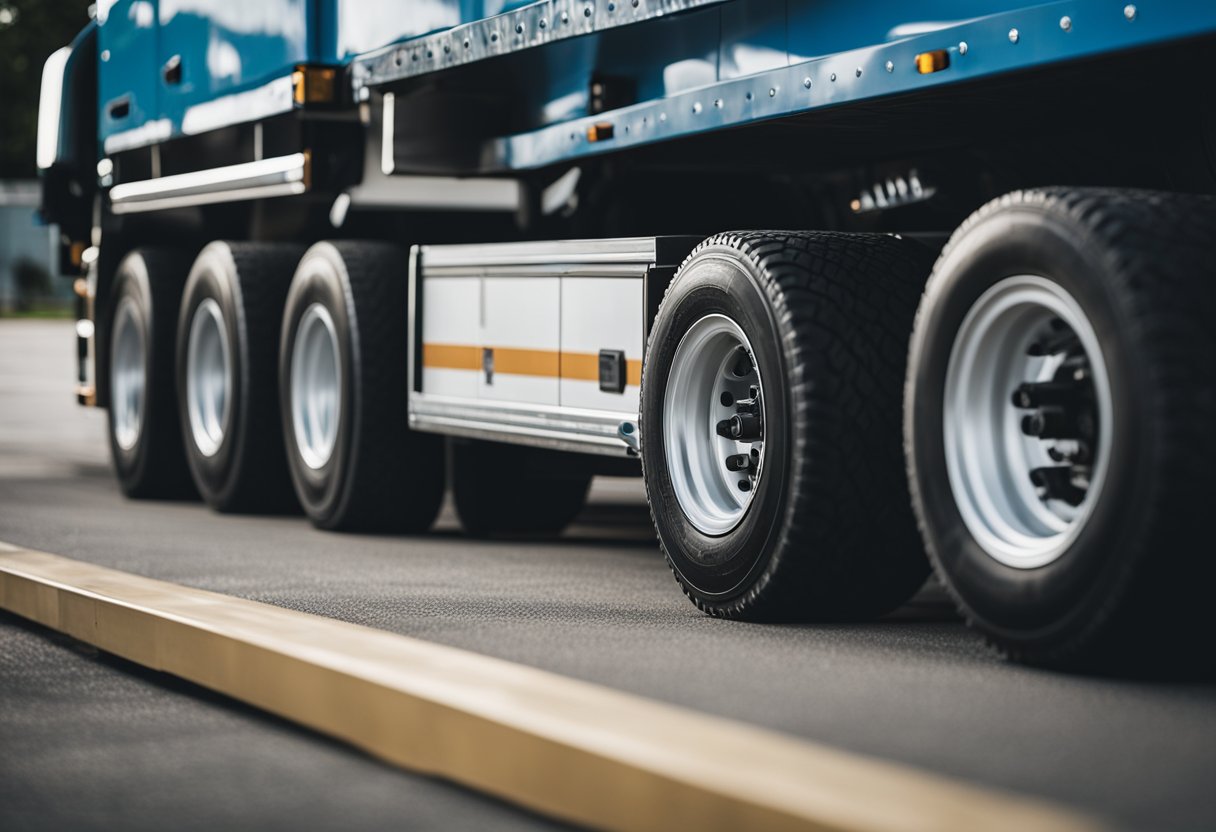When discussing the length of trucks, it’s essential to recognize that various types and models have different dimensions. A common long-haul or semi-truck, for example, can typically pull a 53-foot trailer, which has become somewhat of a standard in the industry. However, this figure only refers to the trailer length and doesn’t account for the cab itself, which can add additional feet to the total length of the truck.

It’s important for those in industries such as shipping and logistics, or anyone interested in purchasing or operating a truck, to understand these dimensions. Truck lengths can also vary depending on their intended use or the specific design of the truck bed. For those new to trucking or in need of a truck for personal use, grasping the different sizes can help in selecting the right option to suit individual needs.
Contents
Key Takeaways
- Semi-trucks commonly pull trailers that are 53 feet long.
- Total truck length varies by type and purpose.
- Knowing truck dimensions is crucial for selecting the right vehicle.
Types of Trucks and Their Lengths
https://www.youtube.com/watch?v=ubpyKHeGrPo&embed=true
In my exploration of the diverse world of trucks, I’ll provide specifics on the different sizes from prominent brands. This precise insight into full-size, mid-size, and heavy-duty trucks will clarify the typical lengths you can expect across these categories.
Full-Size Trucks
Full-size trucks are substantial in both capacity and size. For example, the Ford F150 and Chevrolet Silverado 1500 are quintessential full-size trucks boasting lengths usually around 19.4 to 20.4 feet. Another key model, the GMC Sierra 1500, typically mirrors these dimensions. These vehicles are often chosen for their robust performance and ample cargo space.
- Ram 1500: Approximately 19.5 feet
- Ford F150: Approximately 19.4 feet
- Chevrolet Silverado 1500: Approximately 19.4 to 20.4 feet
- GMC Sierra 1500: Usually close in length to the Chevrolet Silverado 1500
- Toyota Tundra: Ranges around 19.3 feet
- Nissan Titan: On average, about 19.7 feet
Mid-Size Trucks
I have found that mid-size trucks offer a comfortable balance between maneuverability and utility. These trucks, like the Toyota Tacoma or Ford Ranger, generally measure between 17.7 to 18.5 feet in length, making them ideal for those seeking a more contained footprint without sacrificing too much on hauling capabilities.
- Toyota Tacoma: Approximately 17.7 feet
- Ford Ranger: Around 17.5 to 18.5 feet, depending on the cab configuration
Heavy Duty Trucks
Heavy duty trucks are the behemoths of towing and payload, typically used in more demanding work environments. Models like the Ford Super Duty easily exceed 20 feet in length. These trucks are designed for strenuous tasks and are well-equipped to handle heavy trailers and sizable payloads.
- Ford Super Duty series (such as F250 and F350): Ranging from about 20 to 22 feet, contingent on the specific model and bed configuration
By presenting these measurements, I aim to furnish a clear and confident overview of what you might expect when examining various truck sizes for personal or commercial use. These fundamental lengths help in selecting the right truck to meet individual needs, whether for urban navigation or for commercial-grade hauling jobs.
Understanding Truck Dimensions
https://www.youtube.com/watch?v=ir_TFJjN2PA&embed=true
When I discuss truck dimensions, I’m referring to the specific measurements that determine a truck’s size, which includes both the bed lengths and the cab sizes. These factors are critical for anyone looking to understand how trucks are sized for various purposes and the space they will require for operation and parking.
Truck Bed Lengths
Truck beds come in various sizes, typically measured in feet. Regular cabs usually have the longest beds to compensate for the smaller cab size, while crew cabs have shorter beds since the cab takes up more of the truck’s length.
- Short Bed: Generally about 5 to 6 feet in length, ideal for light hauling.
- Standard Bed: Ranging from 6.5 to 8 feet, this bed size is the most common and offers a balance of haul capacity and maneuverability.
- Long Bed: Measuring over 8 feet, these beds are designed for heavy-duty tasks and are commonly found on work trucks.
Cab Sizes
The cab size of a truck affects not only passenger comfort but also the overall dimensions of the vehicle. There are several cab configurations:
- Regular Cab: The smallest, usually seating 2-3 people with no extra space behind the seats.
- Extended Cab: Offers extra storage space or jump seats behind the main seating area.
- Double Cab: Also known as an extended cab by some manufacturers, it typically has four full-sized doors and seats up to 6 people.
- Crew Cab: The largest cab size, featuring more spacious rear seats and four full-sized doors.
Understanding these dimensions helps me make informed decisions whether I’m parking, navigating through tight spaces, or selecting a truck for specific transportation needs.
Truck Bed Styles and Sizes

Truck beds are essential features for payload capacity and utility, varying greatly across styles and sizes to meet different needs. My focus here is to offer a clear understanding of the common bed types and how their dimensions cater to varied uses.
Standard Bed Options
Short Bed: My experience tells me that short beds typically measure around 5 to 6.5 feet in length, offering convenience in handling and parking, particularly in urban settings. This bed size is common and preferred in many compact and full-size pickup trucks. It’s the ideal choice when the balance between cargo space and maneuverability is essential.
Long Bed: In contrast, long bed trucks extend anywhere from 8 to 9 feet, providing significantly more bed space for hauling longer items. While they may present challenges in tighter spaces, these are my recommended option for heavy-duty work or when large cargo capacity is a priority. Fleetside is the most common style for both short and long beds, characterized by straight sides and a wide bed space, optimizing the area for flat, larger items.
Special Bed Types
Stepside Bed: A stepside bed, on the other hand, features steps built into the side of the truck bed, giving it a very distinctive look. These are narrower than fleetside beds with protruding wheel wells inside the bed, limiting the width of the cargo area. In my opinion, while stylish, they offer less overall bed space and are often favored for their classic appearance rather than functionality.
Fleetside Bed: As I touched on earlier, the fleetside bed design is all about maximizing interior space. Its sleek, straight lines provide uniform width, which is why these beds are commonly used in both personal and commercial vehicles. A fleetside long bed truck makes the most of the length and width, becoming a steadfast choice for those in construction, agriculture, and other industries requiring substantial hauling capacity.
By understanding these key truck bed styles and sizes, one can better judge which truck bed serves their specific needs regarding style, bed length, and bed space.
Truck Measurements and Specifications
https://www.youtube.com/watch?v=U1f2XIrZjsA&embed=true
I will discuss the various dimensions of trucks, focusing on cargo space, volume, width, height, and legroom. These measurements are critical when evaluating a truck for transport, shipping, or personal use.
Cargo Space and Volume
Trucks are designed to haul a range of cargo, making the bed dimensions and cargo volume a primary aspect of their functionality. The standard bed length of a full-size pickup truck is generally about 8 feet long, which can typically accommodate significant cargo loads. However, variations exist, such as short beds around 5.5 to 6.5 feet and long beds that can extend beyond 8 feet. Notably, cargo volume can significantly differ between models and makes, often influenced by the presence of wheel wells, which can reduce the usable space.
Typical Cargo Bed Dimensions (approximate):
- Short Bed: 5.5 – 6.5 feet
- Standard Bed: 6.5 – 8 feet
- Long Bed: 8 feet and above
Width, Height, and Legroom
The width and height of a truck not only determine its road presence but also influence its aerodynamics and cargo capacity. Most full-size trucks have a width that falls around or exceeds 80 inches, allowing for a spacious cargo bed and cab. The height, which can span upwards of 6 feet, affects clearance and can be a critical factor for off-road capability or garage storage.
Inside the cab, legroom is an important comfort factor, with many full-size models offering ample space in both front and rear seats. To provide practical insights:
Truck Cab Dimensions (approximate):
- Width: Varies, but usually > 80 inches
- Height: Commonly > 6 feet
- Legroom:
- Front: 40+ inches
- Rear: 30+ inches (can exceed 40 inches in crew cabs)
My examination covers essential measurements and specifications to understand truck dimensions comprehensively.
Selecting the Right Truck for Your Needs
https://www.youtube.com/watch?v=Kyidgpgvou4&embed=true
When I advise clients on choosing a truck, I emphasize the importance of matching the truck’s specifications to their specific needs. Utility, trim levels, powertrain, and capabilities must align with the intended use to ensure the investment is sound.
Considering Truck Utility
For my needs, truck utility has always been about aligning equipment features with my job demands. If I frequently handle heavy loads or rough terrain, I’d choose a full-size pickup truck with four-wheel drive for its superior traction and durability. Assessing towing capacities and payload capacity is critical; a workhorse with an impressive towing capacity ensures I can haul trailers or boats confidently. If cargo capacity is a priority, a truck with a large bed and the ability to install additional accessories might be what I go for.
Comparing Trim Levels
I systematically compare trim levels of trucks to find the ideal balance between luxury and utility. For a robust work truck, the XLT trim offers a middle ground—equipped enough for comfort but not steep in price. The Raptor trim, geared towards off-road performance, provides me with enhanced power and suspension if off-pavement adventures are my weekend norm. At the highest end, the Limited trim boasts advanced features that, while they might elevate the driving experience through technology and superior materials, will reflect in the price tag and may not be necessary if my truck is primarily a utilitarian implement.
Technical Aspects of Truck Sizing

When I approach truck sizing, I focus on the specifics such as actual bed dimensions and cargo capacity, which are crucial for determining if a truck meets the operational requirements.
Understanding Bed Size Charts
I often refer to bed size charts to get accurate measurements of various truck models. These charts provide the exact length, width, and height of the truck bed, which I can use to assess whether a truck fits my cargo needs. For instance, a standard full-size pickup truck typically has a bed that measures about 5.5 to 8 feet in length. It’s essential to use a measuring tape to confirm these dimensions, as manufacturers’ specifications can sometimes vary.
The Importance of Cargo Capacity
The cargo capacity of a truck, usually measured in cubic feet, is a key indicator of how much material the truck can transport. For example, heavy-duty trucks can have a cargo volume that extends well beyond 70 feet in terms of length, especially when considering the total available cargo space. This is significant when planning for efficient loading and to prevent overloading, which can lead to decreased performance and increased wear on the vehicle.
Common Models and Their Dimensions

When it comes to trucks, dimensions are crucial for understanding vehicle capabilities and limitations, especially regarding cargo space and maneuverability. In this section, I’ll provide details on the dimensions of popular full-size and mid-size trucks, as well as heavy-duty models.
Popular Full-Size Truck Models
Ford F-150: This staple of the truck world typically measures around 209-251 inches in length depending on the cab and bed configuration. In terms of width, you can expect around 80 inches.
Chevrolet Silverado 1500 & GMC Sierra 1500: Both these trucks are from General Motors and share similarities in size. They are usually about 230 inches long and 80 inches wide.
Ram 1500: Previously known as the Dodge Ram 1500, this truck model also comes in various lengths ranging from approximately 229 inches to 238 inches, with a width of about 82 inches.
Toyota Tundra: Full-size but on the narrower side, the Tundra spans about 229 inches in length but is around 80 inches wide.
Nissan Titan: Nissan’s full-size offering runs about 228 inches in length and has a width of roughly 80 inches.
Here’s a breakdown of typical truck bed sizes for these models:
- Short Bed: Approximately 5’8” to 5’10”
- Standard Bed: Around 6’5” to 6’7”
- Long Bed: About 8’
Mid-Size and Heavy Duty Variations
Chevy Colorado: A popular mid-size option, the Colorado typically measures around 212 inches in length and 74 inches in width.
Ford Ranger: Smaller than the F-150, the Ranger usually comes in at about 211 inches long and approximately 78 inches wide.
Jeep Gladiator: This unique truck that blends utility with off-road capability spans around 218 inches in length and is 74 inches wide.
Honda Ridgeline: Uniquely built on a unibody frame, the Ridgeline measures roughly 210 inches in length and 78 inches in width.
Toyota Tacoma & Nissan Frontier: Both mid-size contenders run close in length at around 212-225 inches and 74-75 inches in width.
For those interested in heavy-duty trucks, models like the Chevrolet Silverado 2500HD, Ford F-250, and Ram 2500 offer even greater length and width, providing additional hauling capacity and towing power. These models can exceed lengths of 240 inches and offer widths up to 80 inches or more.
Customization and Modifications

When I talk about truck customization, I’m referring to a variety of modifications that can be applied to enhance a truck’s utility, style, or performance. Owners often choose to customize their trucks to meet specific needs or express personal style. Now let’s focus on two particular types of modifications: lift kits and suspensions, and custom bed modifications.
Lift Kits and Suspension
Lift kits are a popular addition when I want to modify a truck’s height and clearance. Installing a lift kit does not just give a truck a more commanding presence, but it also serves practical purposes like improved off-road capability and the ability to accommodate larger rims. For instance, if I add a 4-inch lift kit, my truck gains additional clearance which can drastically change its appearance and utility. It’s crucial that I select a lift kit that matches my truck’s model and trim to ensure a comfortable and safe ride. Equipment used in the lift process—such as extended shocks and struts—must align with the truck’s specifications to maintain or improve handling and legroom.
-
Style and Comfort Adjustments:
- Choose kits that complement the truck’s design.
- Verify compatibility for a safe and comfortable ride.
-
Practical Enhancements:
- Assess kit quality for durability and performance.
- Ensure the lift supports any additional cargo space requirements.
Custom Bed Modifications
As for the truck bed, custom modifications can range from adding toolboxes for increased storage to adjusting the bed’s length to better accommodate specific types of cargo. For example, if I need to routinely transport lengthy materials, extending the bed by a few feet might be a sensible investment. Further design enhancements could include custom liners to protect against wear and tear or the addition of an integrated tailgate step to boost accessibility. It’s important that every bed modification aligns with the truck’s power and frame to ensure that I maintain structural integrity and handling stability.
-
Design Choices:
- Implement custom liners or covers for style and protection.
- Add tailgate steps for improved access.
-
Utility and Function:
- Install storage units and toolboxes for better organization.
- Consider weight distribution for optimal performance and safety.
Purchasing Tips and Considerations

When considering the purchase of a truck, I focus on two key factors that affect my decision: the specific features and design of the vehicle, and the history and condition of the truck. I ensure the truck matches my need for space, comfort, and performance.
What to Ask Your Dealer
Model Specifics:
I always begin by asking the dealer about the model of the truck, specifically its length and cargo capacity. I’m particularly interested in full-size trucks, as they offer ample space for both cargo and passengers, especially the crew cab style which is essential for a comfortable ride while also serving as a workhorse.
- Design Inquiries: I investigate the design aspects that will impact daily use, such as:
- Is the cab style conducive to my work or lifestyle needs?
- What are the cargo bed dimensions, and will it suffice for my typical cargo load?
Service and Maintenance History:
It’s crucial that I obtain a detailed vehicle history report from the dealer. A comprehensive history can indicate how the truck has been maintained and if it has any recurring issues.
- Maintenance Records:
- I request documentation of all service records to assess how well the truck has been maintained.
- Warranty Coverage: I enquire about any existing warranty coverages or service plans included with the truck.
Assessing Vehicle History
Ownership Timeline:
I meticulously review the number of previous owners. A truck with fewer owners is often more appealing, as it suggests consistent maintenance and care.
- Accident History:
- I thoroughly scrutinize any accident reports to understand the extent and impact of any past collisions on the truck’s integrity.
Inspection Reports:
I consider an independent mechanical inspection to verify the condition of critical components:
- Engine, Transmission, and Body Inspection:
- I conduct or arrange for a professional inspection to examine the engine and transmission health along with the bodywork condition to ensure that there are no hidden defects.
By remaining informed about the model specifications and the vehicle’s history, I make a knowledgeable and confident decision when purchasing a truck that fits my requirements for a reliable and serviceable vehicle.
Frequently Asked Questions

In this section, I’ll address some specific queries regarding the lengths of trucks. You’ll find detailed information on the standard dimensions of various trucks, from semi trucks with trailers to full-size truck beds.
What are the standard dimensions of a semi truck and trailer?
The standard dimensions for a semi truck and its trailer in the U.S. are typically around 70 to 80 feet in total length. The trailer alone is usually about 53 feet long.
What is the average length of a full-size truck bed?
A full-size truck bed averages between 5.5 to 8 feet in length, depending on the make and model.
What is the maximum legal length for semi trucks and trailers on the road?
In most states, the maximum legal length for a semi truck and its trailer combination is 80 feet without requiring an oversize permit.
How do semi truck cab lengths vary?
Semi truck cabs can vary in length, generally ranging from 20 to 24 feet for day cabs, while sleeper cabs can be considerably longer, sometimes approaching 30 feet or more.
Can you specify the typical length of a long bed truck?
A typical long bed truck has a bed that is about 8 feet in length, which is a common choice for enhanced cargo space in pickup trucks.
What factors determine the standard 53-foot length of a truck?
The 53-foot length of a standard semi trailer is determined by a combination of federal regulations, efficiency in cargo transport, ease of maneuverability, as well as compatibility with docks and various logistics equipment.

